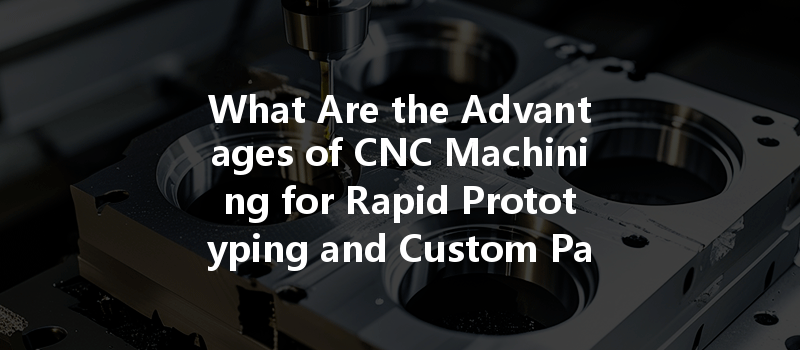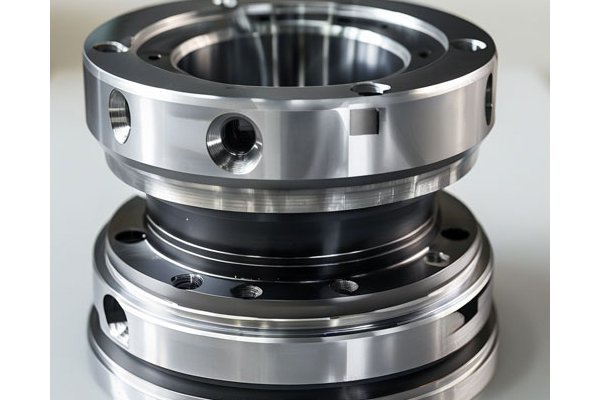Did you know that about 80% of engineering and design projects undergo several iterations before arriving at the final product? Rapid prototyping has become a critical component in the design and manufacturing landscape, allowing engineers to test concepts and refine designs efficiently. With the advent of advanced technologies, such as CNC (Computer Numerical Control) machining, businesses can innovate and produce high-quality parts more effectively than ever before.
This article delves into the advantages of CNC machining, particularly for rapid prototyping and custom part production. We’ll take an in-depth look at how this technology works, its benefits, challenges, and best practices to maximize its potential in various industries.
—
Understanding CNC Machining
CNC machining is a subtractive manufacturing process that uses computers to control machinery tools. The process involves creating parts by removing material from a solid block or a raw material. The machine’s movements, which can be in multiple axes, are precisely dictated by a computer program, which allows for high precision and repeatability.
Key Components of CNC Machining:
—
The Rapid Prototyping Process
Rapid prototyping refers to the quick fabrication of a physical part or assembly using 3D computer-aided design (CAD). The process can employ various techniques, including CNC machining, 3D printing, and injection molding.
CNC Machining in Rapid Prototyping:
—
Benefits of CNC Machining for Custom Part Production
CNC machining provides unrivaled precision and accuracy. Through computer programming, CNC machines can maintain strict tolerances, producing parts that fit and function as intended. This property is especially useful in industries like aerospace and medical devices, where minor deviations can lead to significant failures.
CNC machining is highly scalable, making it suitable for both small runs and mass production. Once a CNC program is set, it can continuously produce parts without variations, making it an optimal choice for businesses looking to grow their production volume gradually.
Although the initial investment for CNC machinery and setup may be high, the long-term savings are substantial. Reduced waste, less need for manual labor, and the efficiency of production add up to lower costs over time. This makes CNC machining a viable option for companies of all sizes.
CNC machining significantly decreases lead times—from the design phase to the finished part. The quick turnaround allows companies to respond faster to market changes and customer demands, giving them a competitive edge.
With advanced CNC machining, engineers can employ complex geometries and intricate designs that would be impossible or extremely labor-intensive to accomplish with traditional methods. This opens doors for innovations that push product capabilities to new heights.

—
Challenges of CNC Machining
While CNC machining offers numerous benefits, it is not without its challenges:
The purchase of CNC machines and the required software can be a significant financial commitment, deterring small businesses from investing in the technology.
CNC machining requires skilled operators who understand both programming and machining processes. This necessity can present a barrier for companies that lack technical expertise.
CNC machines require regular maintenance and calibration to ensure they produce high-quality parts consistently. Over time, wear and tear can affect precision, which requires a commitment to ongoing care and adjustment.
—
Best Practices for Maximizing CNC Machining Benefits
To make the most of CNC machining for rapid prototyping and custom part production, businesses should consider the following best practices:
Ensure that your team is well-trained in both the operation of CNC machinery and the associated software. Continuous education can help keep engineers updated on the latest techniques and technologies.
When designing parts, consider CNC machining capabilities. This involves avoiding overly complex shapes, minimizing tool changes, and selecting appropriate tolerances. Streamlining your designs can enhance the efficiency of the machining process.
Utilize simulation software to visualize the machining process before production begins. This can help identify potential issues and optimize the process, saving time and resources.
Collaborating with established CNC machining service providers can help access expertise and advanced capabilities that may be lacking internally. Suppliers can offer insights into best practices and technology trends.
—
Case Studies: CNC Machining in Action
Case Study 1: Aerospace Industry
An aerospace manufacturer needed to develop a new component for an aircraft’s fuel system. Using CNC machining, they were able to create a prototype from the design stage to completion in a matter of weeks. The precision of CNC allowed for crucial adjustments, and the final product met stringent safety requirements with a significantly reduced lead time.
Case Study 2: Medical Device Production
A medical device company required a series of prototypes for a new surgical tool. By utilizing CNC machining, they achieved accurate dimensions and surface finishes necessary for functionality and comfort. The quick turnaround enabled them to test multiple iterations with healthcare professionals, leading to a successful final design and market launch.
—
CNC machining has revolutionized the landscape of rapid prototyping and custom part production. Its precision, speed, and scalability are critical for industries aiming to innovate and adapt in a fast-paced market. This technology not only streamlines the production process but also enhances design capabilities and reduces costs, making it indispensable for companies looking to remain competitive.
In summary, investing in CNC machining can yield significant benefits for your business, enabling rapid iterations and high-quality production of custom parts. As industries continue to evolve, understanding and integrating this technology becomes all the more critical.
As you ponder the integration of CNC machining into your production processes, remember that embracing technology is key to achieving operational excellence. The future of manufacturing is here—are you ready to embrace it?






